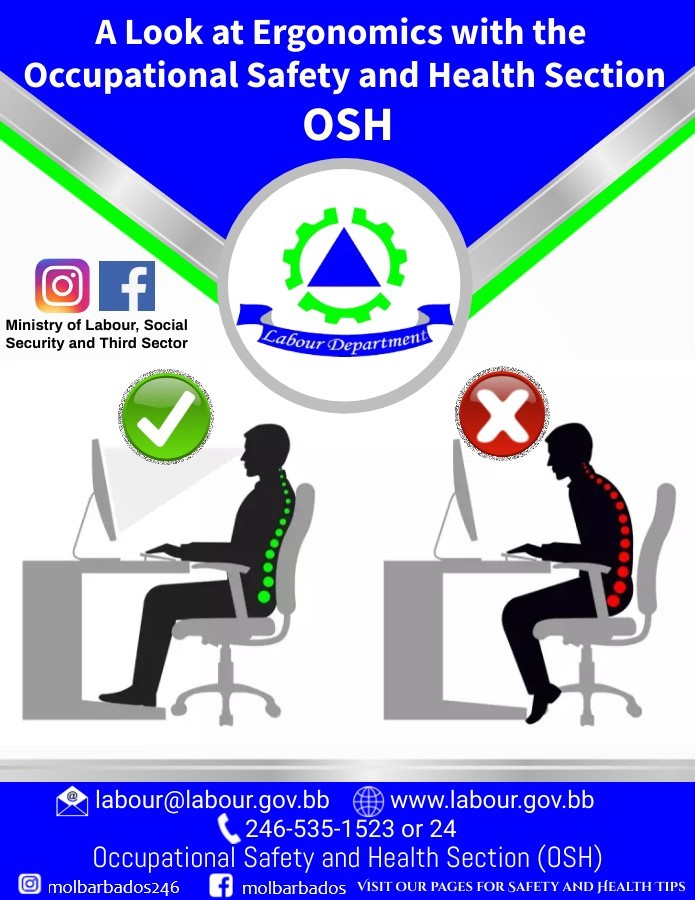
WHAT IS ERGONOMICS?
Ergonomics is a discipline aimed at maximizing workers’ safety and comfort by matching the requirements of their work and workplace to their capabilities. The word ergonomics is derived from the Greek language and when translated literally the term means the study-measurement-organisation of work. Ergonomics is an interdisciplinary science calling on knowledge and techniques from a wide range of subjects including:
- Physiology
- Biomechanics
- Anatomy
- Engineering
- Psychology
- Sociology
Ergonomists, sometimes referred to as human factors engineers, are concerned with finding ways to reduce the accumulation of mental and physical stresses that are often involved in routine activities. For example, the introduction of adjustable furniture and alternative tool design are intended to improve worker comfort and may be termed ‘ergonomic designs’. Similarly, of concern in the field of ergonomics, are issues such as mental work load and the timing and pacing of work. The primary focus is the individual interacting with the engineered environment, as individuals have limitations which designs should take account of.
WHERE IS ERGONOMICS APPLIED?
The areas of application are broad capturing passenger ergonomics as well as ergonomics of sport, the home and the workplace. In the industrial setting for example the application of ergonomics is widely practiced in the design of vehicle interiors where controls and seating are designed to accommodate the physical attributes of persons of varying stature. Another prominent use of ergonomics is in the service and office type environments. In these instances emphasis is placed on work station design and job design. In recent times, there has been some emphasis on the layout of the computer workstation.
WHAT IS THE CONNECTION BETWEEN ERGONOMICS AND OCCUPATIONAL SAFETY AND HEALTH?
As a result of safety and health concerns, it may be found necessary to implement ergonomic improvements in order to alleviate a particular condition. For example, the height or orientation of a work surface may be adjusted so as to solve the problem of excessive bending or twisting of the body.
In many cases, ergonomic improvements increase productivity. Employees are most likely to work efficiently and accurately when they are relieved of strain and stress. Few people are able to do their best work when they are tense or fatigued from inappropriate workstation or job design.
WHAT TYPE OF ACTION IS TAKEN IN THE WORKPLACE?
A variety of methods are at the disposal of employers, and employees and ergonomists. Established best practice indicates that self-reporting is a valuable tool in highlighting concerns. More in-depth evaluation is undertaken by trained persons. Such work would involve, for example, the use of surveys and walk-through inspections. The information gathered is used to form the basis of recommendations for improved workstation or job design.
WHO HAS THE RESPONSIBILITY FOR ENSURING THAT APPROPRIATE ERGONOMIC PRINCIPLES ARE APPLIED AND MAINTAINED IN THE WORKPLACE?
The responsibility for safety and health matters (including ergonomics) is shared by three parties: the employer, the employee and government. Governmental responsibilities are executed through specific legal provisions and the actions of the relevant monitoring and enforcement agencies. In this case the relevant agency is the Labour Department – Occupational Safety and Health Section. With respect to ergonomics and the other areas of occupational safety and health, the responsibilities of the employers and employees as outlined in the Safety and Health at Work Act, CAP 356 are as follows:
Responsibilities of Employers
- to provide a safe place of employment;
- to provide a safe system of work (methods and procedures);
- to provide safe tools;
- to provide safe fellow employees; and
- to provide adequate supervision.
Responsibilities of Employees
- to assist the employer in promoting safety and health;
- to inform the employer of unsafe conditions and practices of which he is aware;
- to use all means and appliances provided for his safety; and
- to do nothing which is likely to endanger self or others.
LABOUR DEPARTMENT- OCCUPATIONAL SAFETY AND HEALTH SECTION (OSH)
Promoting the attainment and maintenance of desirable standards of occupational safety and health practice in Barbados





